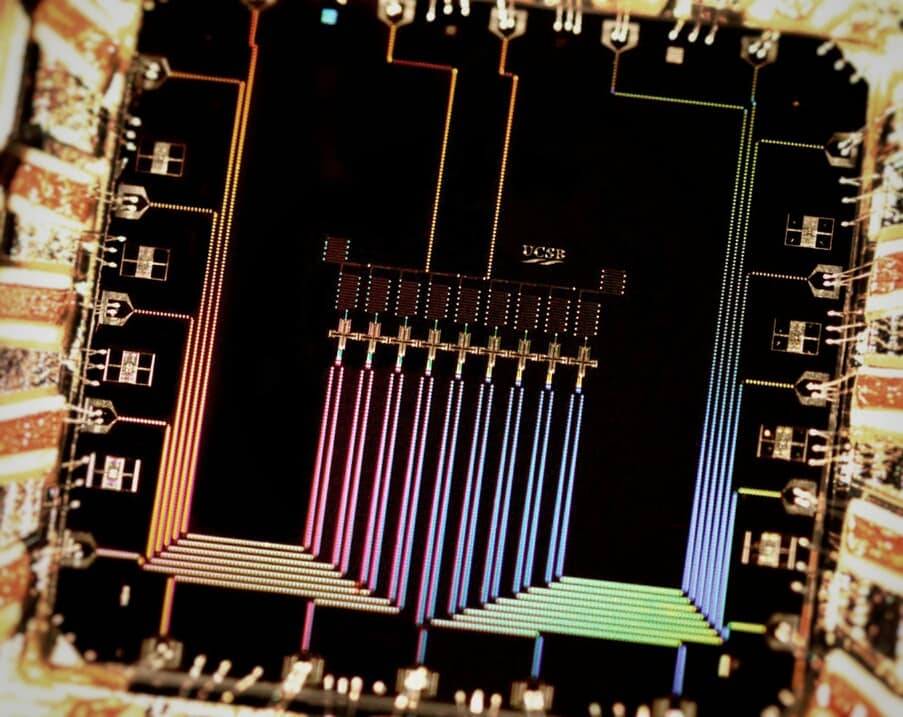
By Tushna Commissariat in New York City, US
Although the APS March meeting finished last Friday and I am now in New York visiting a few more labs and physicists in the city (more on that later), I am still playing catch-up, thanks to the vast number of interesting talks at the conference. One of the most interesting sessions of last week, and a pretty popular one at that, was based on “20 years of quantum error correction” and I went along to the opening talk by physicist John Preskill of the California Institute of Technology. I had the chance to catch up with Preskill after his talk and we discussed just why he thinks that we are not too far away from a true quantum revolution.
Just in case you haven’t come across the subject already, quantum error correction is the science of protecting quantum information (or qubits) from errors that would occur as the information is influenced by the environment and other sorts of quantum noise, causing it to “decohere” and lose its quantum state. Although it may seem premature that scientists have been working on this problem for nearly two decades when an actual quantum computer has yet to be built, we know that we must account for such errors if our quantum computers are ever to succeed. It will be essential if we want to achieve fault-tolerant quantum computation that can deal with all sorts of noise within the system, as well as faults in the hardware (such as a faulty gate) or even a measurement.
Over the past 20 years, theoretical work in the field has made scientists confident that quantum computing of the future will be scalable. Preskill says that “it’s exciting because the experimentalists are taking it quite seriously now”, while initially the interest was mainly theoretical. Previously, scientists would artificially create the noise in the quantum systems that they would correct but now actual quantum computations can be fixed. Indeed, Preskill says that one of the key things that has really moved quantum error correction along in the past few years is the concentrated improvement of the hardware used, i.e. better gates with multiple qubits being processed simultaneously.
Today, we have a variety of qubits at our disposal, including the ever-popular superconducting qubit (which is stable and best suited in an actual quantum computer), photonic qubits (which would be good for communications), spin qubits and ion traps (they are fundamentally reproducible and easy to scale up to 50–100 qubits). Each of these has its own pros and cons, and different experimental groups and companies all over the world are working towards turning one of them into the key element of the first quantum computer. With both superconducting circuits and ion traps, scientists have managed to correct a two-qubit gate so that it has an error rate of less than 1% and some of these results were presented at the session.
Surprisingly, the quest to fix quantum errors has helped improve our understanding of other areas of physics – such as topological phases of matter and new insights into quantum gravity – that at first glance seem unrelated. The cosmological aspect is of particular interest to Preskill, who has been looking into simulating the dynamics of black-hole interiors, which can be done “using highly entangled quantum systems under the right circumstances”, he says. Indeed, in one of the last slide’s of his talk, Preskill quoted his former postdoc Beni Yoshida as saying “now is the time for quantum information scientists to jump into black holes”.
The idea has definitely caught the interest of a number of researchers in both fields and has now spawned the “It from Qubit” collaboration, funded by the Simons Foundation. The collaboration hopes to break the barriers between fundamental physics and quantum information theory by bringing together top players from both fields – such as Preskill, Scott Aaronson, Leonard Susskind and others – to “foster communication, education and collaboration between them, thereby advancing both fields and ultimately solving some of the deepest problems in physics”.
Indeed, it hopes to answer questions such as “Does space–time emerge from entanglement?” and “How does quantum information flow in time?”. The project is headed by Patrick Hayden of Stanford University, who has worked with Preskill in the past on black-hole firewalls and quantum computations. The collaboration has an upcoming interdisciplinary summer school at the Perimeter Institute in Canada this July and I for one am looking forward to seeing how these two fundamental fields of physics come together.



